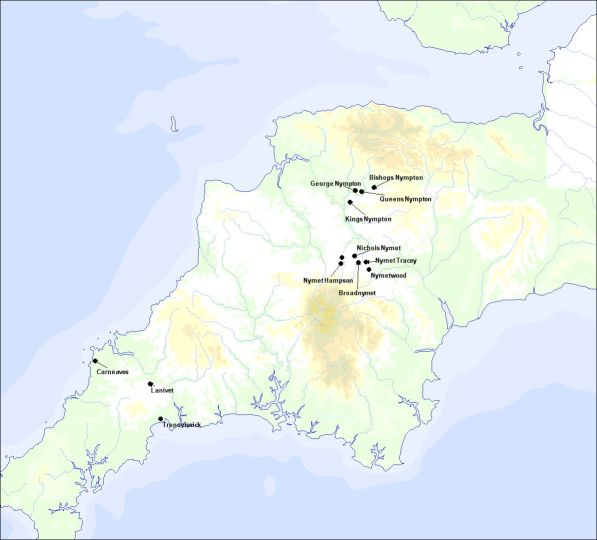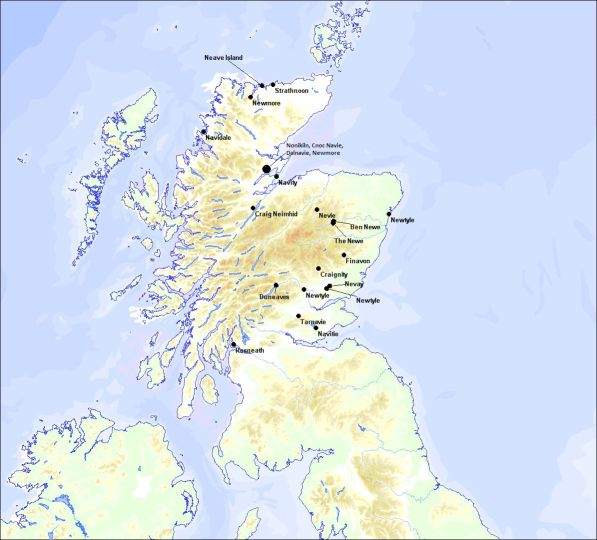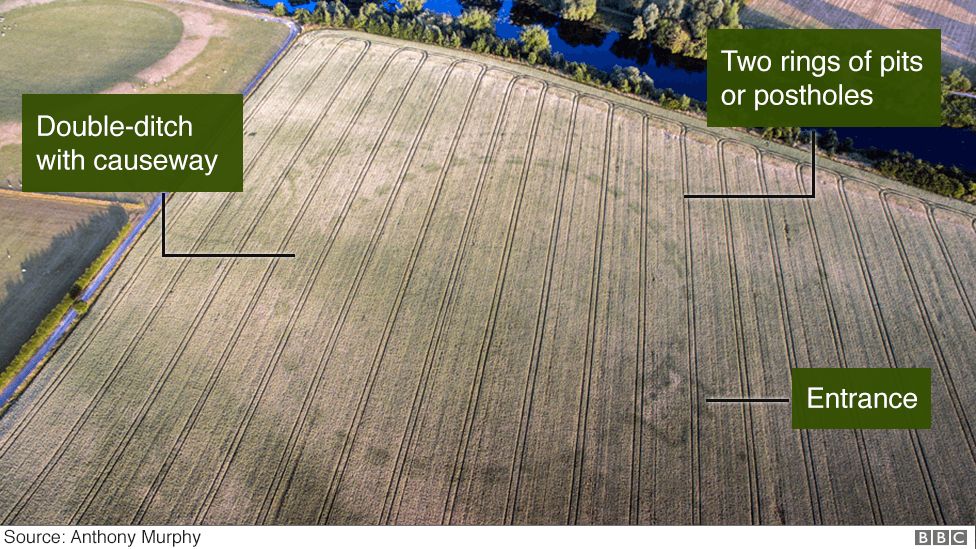
Click the above logo to return to the main site
The Neolithic trackway, which had evidence of being repeatedly restored and renewed over decades and probably generations, seems to have led up to a level timber platform, with spring water deliberately channelled to surround it. From the platform, objects were dropped into the running water, including metal, pottery and the horned aurochs skull.
Prehistorians and ancient timber experts visited the site, and their opinion and the dating evidence bears out the realisation that the archaeologists had stumbled upon a major site of which not a trace remained in the historical record, despite evidence of Roman, Saxon and medieval occupation of the site. They now realise they did not pay enough attention when they were told that the traditional name of the field was Seven Springs.
The archaeologists found Roman ditches clipping the edge of the site, and traces of Saxon buildings, but the site remained almost unchanged for centuries until the slope was filled and levelled around the 11th century – which had the effect of burying the springs level and preserving the timbers.
Archaeologists stumble on Neolithic ritual site in Suffolk
The presentation of my lecture on Noreia and the Celtic national sanctuary in the Glantal in the "Tagespost" of 18 December forms the basis for the critical reservations that Professor Dr. Ing. Walter Schmid in the Christmas number of this sheet against my listings brings forward. It is to be regretted that the discussion here, as well as otherwise in every scientific dispute so desired and conducive to the cause, is based on a highly summary account in which all or almost all the decisive details have been omitted. In addition, a scientific argument does not appear to be a daily newspaper and it would not have taken the way from there, if not immediately following the findings in the digs Walter Schmid would have used a movement that - assuming the Noreia question was now finally resolved - by setting up a memorial, so to speak, to put the final point under the discussion. Only to warn against this premonition, I have come to the public with the results of my norei studies, which had been won long before the discovery of those excavations. As far as the remarks of Professor Schmidt are concerned, he first of all criticizes the fact that the Hohenstein four-mountain journey, in which I see the Celtic vernemont of Noricum, does not touch it at all. that is not necessary, it would even contradict the sense of the ride, which, yes, not in zigzag, as Prof. Schmidt means, but in the sense of the sun's flight from the east, the Helenenberg, south, the Ulrichsberg, from there westward moved to the Göseberg and north to Laurenziberg.


It was while flying towards Site P on a second circuit of it that I caught a glimpse of what looked like a big broken circle in the crop field to the west of it. I flew a bit closer. Fairly quickly I got a glimpse of what seemed to be outer rings of dots...... I let out a loud exclamation. "What the f*ck is this?" (This, for obvious reasons, has been reported to the media as "what the hell is this?")
Pretty soon Ken was letting out exclamations of his own! For the next 10 or 15 minutes, we flew around the feature taking photos. We noticed several other features of interest. Immediately to the west of the "new henge" was what appeared to be another large enclosure. And in the far northeast of the field some more circles. And close to the lake and trees, just to the north of them, a mottled landscape of dark and bright features.
We knew fairly quickly that what we were seeing was something very special. And huge. We are both familiar with the recorded monuments of the Bend of the Boyne, and we know that nothing of this size had been recorded in that field previously. Astonished and giggling with excitement, we landed the drones.

Archaeologists in Ireland have uncovered a 5,500-year-old megalithic passage tomb which has been branded the 'find of a lifetime'. Experts unearthed the 'significant' discovery on farmland near 18th Century Dowth Hall in the Brú na Bóinne, or Boyne Valley Tombs, World Heritage Site. The excavation uncovered two burial chambers, as well as six kerbstones, which would have formed part of a ring of stones that followed the perimeter of the cairn. One kerbstone is heavily decorated with Neolithic carvings and represents one of the most impressive discoveries of megalithic art in Ireland for decades, experts say.
Users browsing this forum: Bing [Bot], Google [Bot] and 3 guests